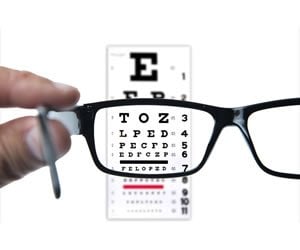When John Flanagan was 5 years old, he began suffering from migraines. “One of the things my doctor asked me to do was go and get my eyes checked,” says the British-born Dean of the University of California Berkeley School of Optometry. “Lo and behold, I was myopic.” He started wearing glasses, the headaches stopped, and thus began a lifelong love of optometry. “I always enjoyed seeing the optometrist – those flashing lights, colors, numbers – it all seemed very cool when I was a young kid.”
Years later, after receiving his professional qualification in Optometry and Vision Sciences from Aston University in Birmingham, UK, he was offered a research position upon graduation. “I remember saying I’ll go for one year and if I don’t like it, I’ll go back into practice, because I really enjoyed practicing. But I never looked back. I really enjoyed research, and I was lucky to be offered a job in Canada as soon as I got my PhD.” After a stint as an assistant professor at the University of Waterloo, Flanagan was cross-appointed at the University of Toronto. “I worked with their opthalmology department for many years, straddling the two disciplines, which gave me a lot of freedom to pursue research,” he explains. By “pursuing research”, he means not only directing the Glaucoma Research Unit at Toronto Western Research Institute, but also working as a Senior Scientist at Toronto Western Hospital.
Cut to June 2014, when Flanagan began a five-year term as Dean of the School of Optometry at University of California, Berkeley. “My favorite part of the job is the interaction with the students – both the PhD and the professional optometry students,” he told SDN while attending the UC Davis Pre-Health Conference last October. “It keeps you energized, keeps me on my toes. It’s a wonderful environment to be in.”
Flanagan also enjoys being part of the admissions process. When asked what his program looks for in a prospective student, he smiled. “Brilliance. The brightest and the best. People who have [not only] the right prerequisites, [but also] the right attitude. We put a lot of time and effort into interviewing everybody who’s going to be offered a place. It’s an important part of trying to get the right fit.”
Part of finding that right fit includes discovering students who truly understand the unique role of the optometrist in today’s medical landscape. “You could argue that there’s never been a better time to get into optometry, due to [society’s] changing demographics…There’s plenty of demand. The most common [career route] is private practice, but there are many other opportunities – research, PhD programs….There are now 22 schools of optometry that need to recruit faculty, so there are plenty of opportunities in terms of research and academic life. And industry too. Some of our most prominent graduates are at very high levels of industry. The pharmaceutical industry always has a big ophthalmic unit – chronic eye disease, constant use of drops, contact lens solutions, so there are always developments happening in those areas.”
Flanagan believes the complementary relationship between ophthalmology and optometry has also blossomed in the past few years. “Ophthalmologists and optometrists work together every day – most of the referrals to ophthalmologists come from optometrists. So those working relationships are there – but they are very different professions. We often make the comparison that we are like the family physician for the eye,” he explains.
“Ophthalmology has become more specialized as time goes on; many more of the ophthalmologists graduating now will be a retina specialist, pediatric, and so forth. It’s much more of a surgical profession. You do your medical school and then you do your residency in ophthalmology, which is very competitive, and then often a fellowship to specialize. Whereas optometry is still the home of the generalist. We do have sub specialty skills that we can practice, but we are still a primary care physician and proud to be so.”
Perhaps this generalist mentality was present in Flanagan’s youth, despite how focused his career trajectory may seem. During his medical training, he was “very involved in music and theater; I just had a lot of other interests, and those are what shaped me more than the professional program itself.” He advises his own students – and all student doctors – to stay similarly well-rounded. “Make the most of the environment you’re in. It is so easy as a medical student not to get involved in university environment, but most professional programs are at fabulous universities, so you can get involved in other things too. I know your time is limited, but you need that balance.”
